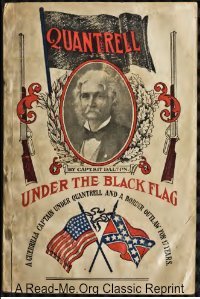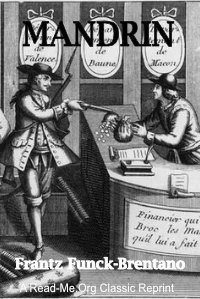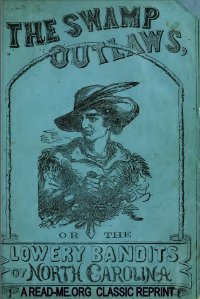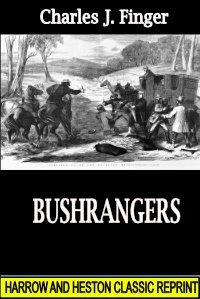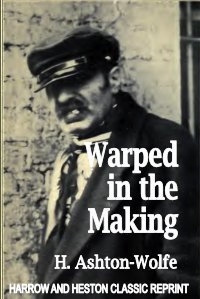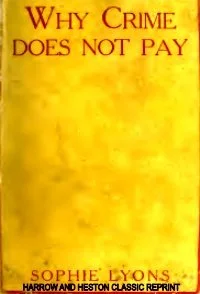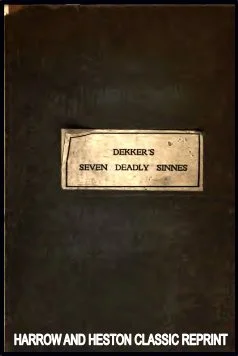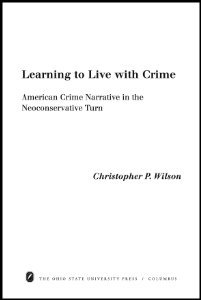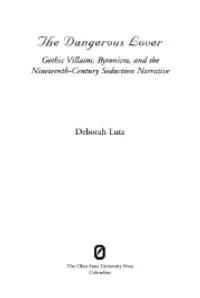By Clifton H. Wooldridge.
In presenting this work to the public the author has no apologies to make nor favors to ask. It is a simple history of his connection with the Police Department of Chicago, compiled from his own memoranda, the newspapers, and the official records. His aim has been solely to protect society and the taxpayer, and to punish the guilty. The evidences of his sincerity accompany the book in the form of letters from the highest officers in the city government, from the mayor down to the precinct captain, and furnish overwhelming testimony as to his endeavors to serve the public faithfully and honestly. No effort has been made to bestow self-praise, and where this occurs, it is only a reproduction, perhaps in different language, of the comments indulged in by the newspapers of Chicago and other cities.
Chicago: Chicago Publishing, 1908. 612p.
By Frantz Funck-Brentano.
“Louis Mandrin led a gang of bandits who brazenly smuggled contraband into 18th-century France. Michael Kwass brings new life to the legend of this Gallic Robin Hood and the thriving underworld he helped to create. Decades before the storming of the Bastille, surging world trade excited a revolution in consumption that transformed the French kingdom.” (French)
Paris: Hachette, 1911. 629p.
No author listed.
The North Carolina Bandits, being a complete history of the modern Rob Roys and Robin Hoods. “ The homely old adage that there is ‘nothing new under the sun’ is constantly verifies by actual facts occurring every day. The accounts handed down by tradition of ‘bold archer Robin Hood’ keeping whole countries on alert, and disputing there right to kill fat bucks in the royal forest with the boldest barons, have seemed almost too daring for relief, yet here we have — in this enlightened period of the world’s history — a whole State of the most powerful and most enlightened nation of the earth successfully defied by a band of less than a dozen Outlaws.”
New York. De Witt Publisher. (1872) 84 pages.
By Phillip Gosse.
“Let it be made clear at the very outset of this Preface that the pages which follow do not pretend to be a history of piracy, but are simply an attempt to gather together, from various sources, particulars of those redoubtable pirates and buccaneers whose names have been handed down to us in a desultory way.”
Burt Franklin, NY. (1924) 329 pages.
By Charles Dickens.
Dickens traveled to America in 1842 and wrote letters home to his friend John Forster. These were published in a book in the same year. It was not received well because of his criticism of American manners, slavery, and the American press.
Harrow and Heston Classic Reprint. (1842) 240 pages.
By Charles Finger.
With illustrations by Paul Honore. “The term ‘bushranger’ was first used by those living under the Southern Cross to signify not necessarily an outlaw, but rather something very like the chaldon of Siberia, prisoners who, rather than submit tamely to gross indignities thrust upon them by men in authority, dared to publish their own emancipation proclamations, facing unknown dangers with a slight hope of freedom.”
N.Y. Robert M. McBride & Co. (1924).
By J. Dimsdale.
Or Popular Justice in the Rocky Mountains.. “Being a correct and impartial narrative of the chase, trial, capture, execution of Henry Plummer’s Road Agent Band, together with accounts of the lives and crimes of many of the robbers and desperadoes. The whole thing being interspersed with sketches of the life in the mining camps of the Far West.”
State Publishing Co. (1866) 352 pages
By Sophie Lyons.
Queen of the Underworld. The publishers believe that a picture of life sketched by a master hand — somebody who stands in the world of crime as Edison does in his field or as Morgan and Rockefeller do in their — could not fail to be impressive and valuable and prove the oft repeated statement that crime does not pay.”
New York Ogilvie Publishing (1913) 294 pages.
By David M. Stewart.
Historians of workingmen in the antebellum United States have long been preoccupied with labor politics and with the racism, nativism, and misogyny of their public culture. Reading and Disorder in Antebellum America expands our account of such men by asking questions about their social and bodily lives that are more discrete, yet still engaged with the economic forces that radically altered working life as the market revolution transformed a rural, agricultural nation into one that was commercial, industrial, and urban. To advance a more capacious view of workingmen, David M. Stewart turns to reading, which is where many first encountered antebellum change as a material fact. Tapping sources from serial fiction, reform tracts, and children’s books, to diet, land use policy, and personal correspondence, Stewart contends that in helping retool a workforce of farmers and artisans to meet the disciplinary needs of capital, the period’s burgeoning new print culture industry developed rhetoric that used emotional coercion to affect conduct. This rhetoric also became the basis for recreational idioms that compensated for the pain of both coercive reading itself and the world such reading produced. In the space between the disciplinary and recreational lives of workingmen, Reading and Disorder revises how we understand them as performative subjects, which is to say, as cause and effect of changing antebellum times.
Columbus, OH: Ohio State University Press, 2011. 242p.
By Christopher P. Wilson.
Since the mid-1960s, the war on crime has reshaped public attitudes about state authority, criminal behavior, and the responsibilities of citizenship. But how have American writers grappled with these changes? What happens when a journalist approaches the workings of organized crime not through its legendary Godfathers but through a workaday, low-level figure who informs on his mob? Why is it that interrogation scenes have become so central to prime-time police dramas of late? What is behind writers’ recent fascination with “cold case” homicides, with private security, or with prisons? In Learning to Live with Crime, Christopher P. Wilson examines this war on crime and how it has made its way into cultural representation and public consciousness. Under the sway of neoconservative approaches to criminal justice and public safety, Americans have been urged to see crime as an inevitable risk of modern living and to accept ever more aggressive approaches to policing, private security, and punishment. The idea has been not simply to fight crime but to manage its risks; to inculcate personal vigilance in citizens; and to incorporate criminals’ knowledge through informants and intelligence gathering. At its most scandalous, this study suggests, contemporary law enforcement has even come to mimic crime’s own operations.
Columbus, OH: Ohio State University Press, 2010. 302p.
By Deborah Lutz.
The dangerous lover has haunted our culture for over two hundred years; English, American, and European literature is permeated with his erotic presence. The Dangerous Lover takes seriously the ubiquity of the brooding romantic hero—his dark past, his remorseful and rebellious exile from comfortable everyday living. Deborah Lutz traces the recent history of this figure, through the melancholy iconoclasm of the Romantics, the lost soul redeemed by love of the Brontës, and the tormented individualism of twentieth-century love narratives. Arguing for this character’s central influence not only in literature but also in the history of ideas, this book places the dangerous lover firmly within the philosophy of Martin Heidegger, the Modernism of Georg Lukács, and Roland Barthes’s theories on love and longing. Working with canonical authors such as Ann Radcliffe, Charles Maturin, Lord Byron, Charles Dickens, George Eliot, and Oscar Wilde, and also with non-canonical texts such as contemporary romance, The Dangerous Lover combines a lyrical, essayistic style with a depth of inquiry that raises questions about the mysteries of desire, death, and eroticism. The Dangerous Lover is the first book-length study of this pervasive literary hero; it also challenges the tendency of sophisticated philosophical readings of popular narratives and culture to focus on male-coded genres. In its conjunction of high and low literary forms, this volume explores new historical and cultural framings for female-coded popular narratives.
Columbus, OH: Ohio State University Press, 2006. 117p.
By Régine Michelle Jean-Charles.
This book explores the relationship between rape and narratives of violence in francophone literature and culture. The book offers ways to account for the raped bodies beneath the conflicts of slavery, genocide, dictatorship, natural disasters and war—and to examine why doing so is necessary. Through a feminist analysis of the rhetoric and representation of rape in francophone African and Caribbean cultural production, Conflict Bodies examines theoretical, visual, and literary texts that challenge the dominant views of postcolonial violence. Using an interdisciplinary and comparative framework to consider different contexts—Haiti, Guadeloupe, Rwanda, and Democratic Republic of the Congo—Régine Michelle Jean-Charles illuminates how analyzing survivors’ subjectivities, stories, and embodied experiences provides a nuanced understanding of what is at stake in rape representation. Referencing theories from francophone literary studies, transnational black feminisms, and rape cultural criticism to analyze novels, film, photography, drama, and documentaries, Jean-Charles argues that in today’s global climate—where one in three women worldwide has been raped, rape is being used as a tool of war, and rape myths circulate with vehemence—traditional “scripts of violence” that fail to account for sexual violence demand refusal, re-thinking, and re-imagining.
Columbus, OH: Ohio State University Press, 2014. 335p.



